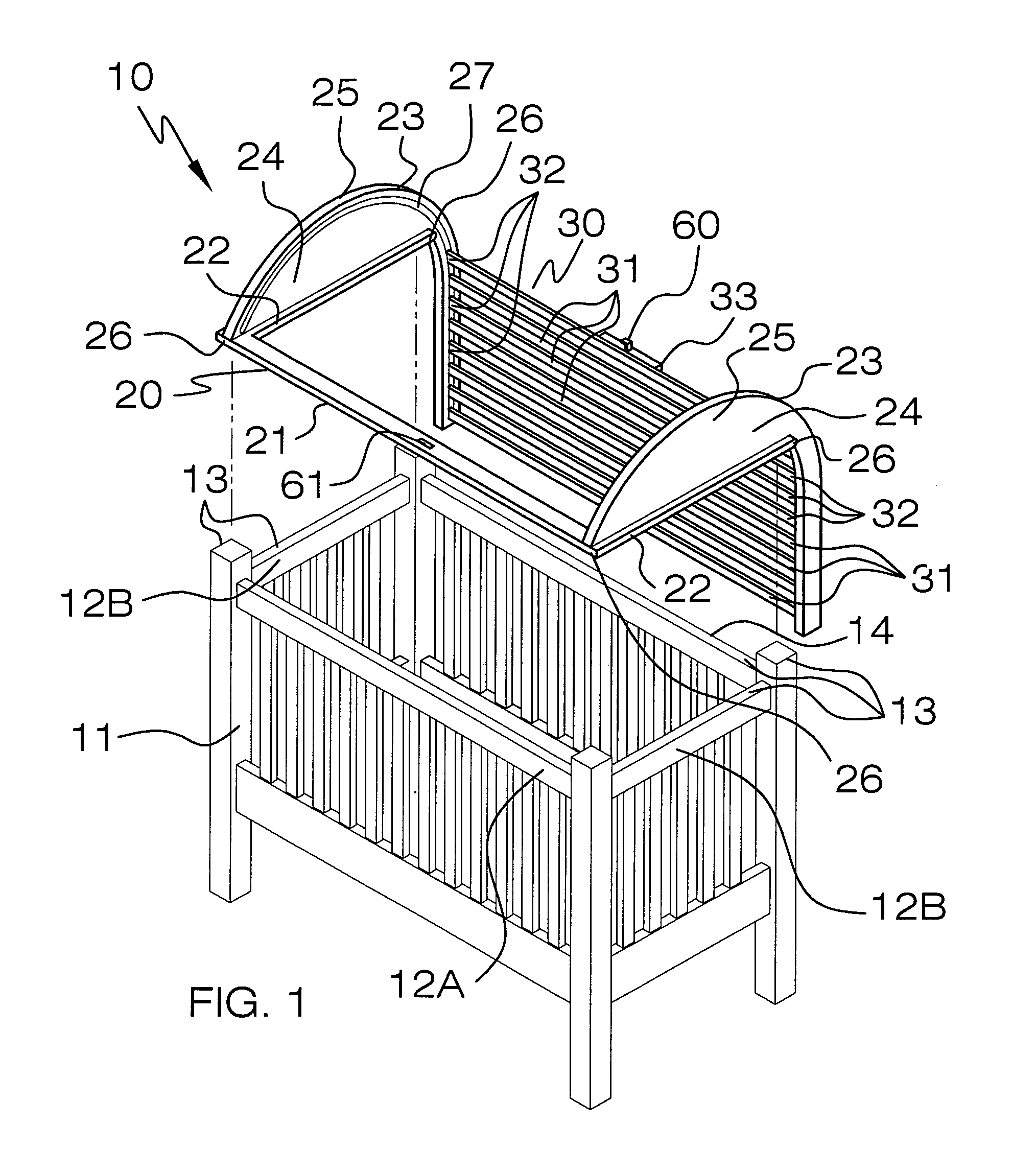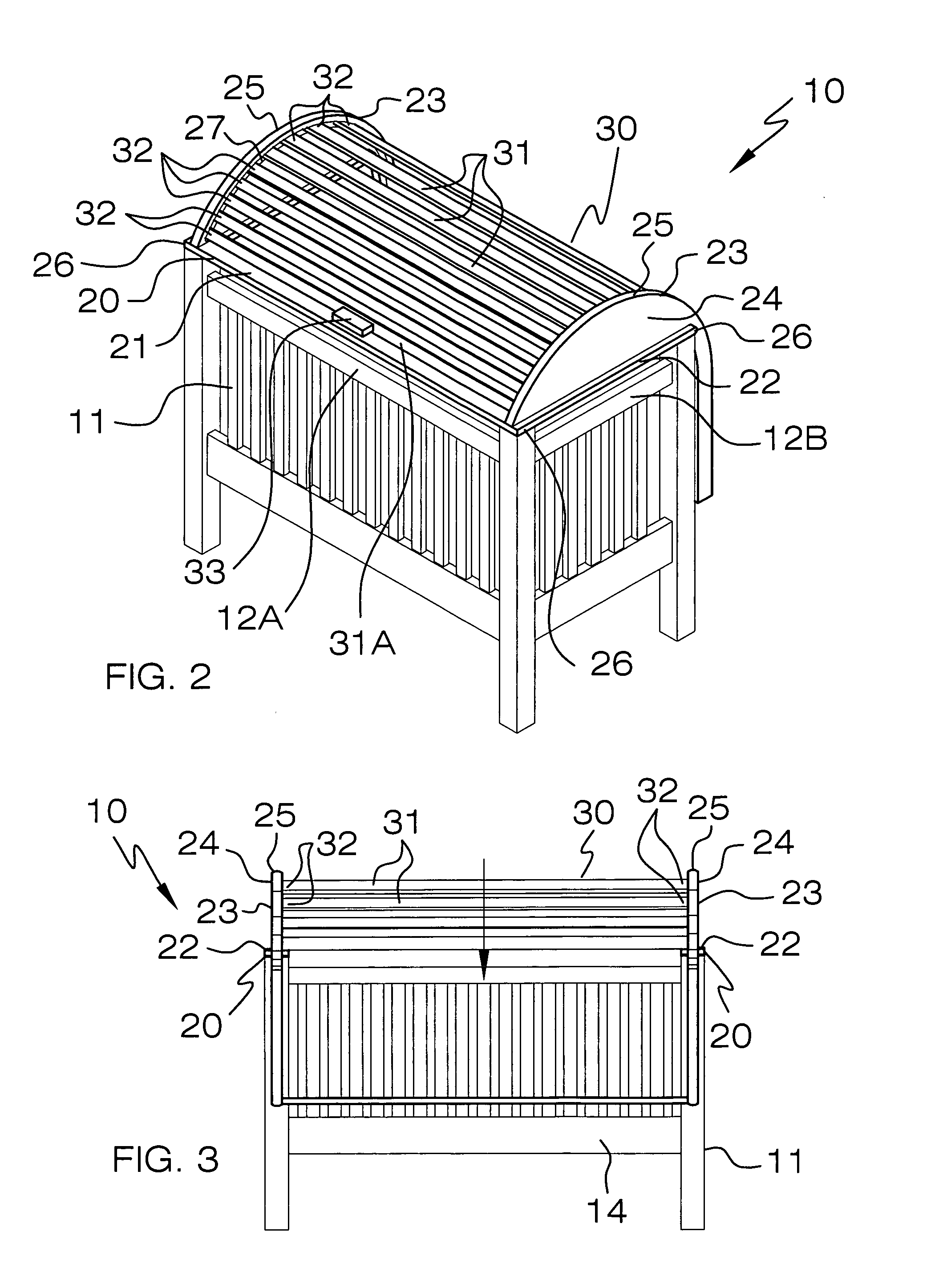Portable dome cover for cribs and the like
a dome cover and crib technology, applied in the field of crib covers, can solve the problems of inability to continuously supervise, remain a number of inherent limitations in the design of such devices, and the canopy lies directly perpendicular to the side walls
- Summary
- Abstract
- Description
- Claims
- Application Information
AI Technical Summary
Benefits of technology
Problems solved by technology
Method used
Image
Examples
Embodiment Construction
[0025]The present invention will now be described more fully hereinafter with reference to the accompanying drawings, in which a preferred embodiment of the invention is shown. This invention may, however, be embodied in many different forms and should not be construed as limited to the embodiment set forth herein. Rather, this embodiment is provided so that this application will be thorough and complete, and will fully convey the true scope of the invention to those skilled in the art. Like numbers refer to like elements throughout the figures.
[0026]The assembly of this invention is referred to generally in FIGS. 1–5 by the reference numeral 10 and is intended to provide a portable dome cover for cribs and the like. It should be understood that the assembly 10 may be used to cover many different types of pen-like structures and should not be limited in use to only covering an infant's crib. Furthermore, it is noted that the present invention may be monolithically formed with a crib...
PUM
 Login to View More
Login to View More Abstract
Description
Claims
Application Information
 Login to View More
Login to View More - R&D
- Intellectual Property
- Life Sciences
- Materials
- Tech Scout
- Unparalleled Data Quality
- Higher Quality Content
- 60% Fewer Hallucinations
Browse by: Latest US Patents, China's latest patents, Technical Efficacy Thesaurus, Application Domain, Technology Topic, Popular Technical Reports.
© 2025 PatSnap. All rights reserved.Legal|Privacy policy|Modern Slavery Act Transparency Statement|Sitemap|About US| Contact US: help@patsnap.com



